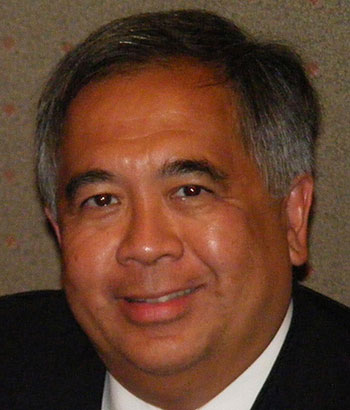Traditional Feng Shui - Characteristics of Energy Tracing

Dr. Michael Oon

- The Chinese Training System
I found an established Feng Shui Consultant looking for students who would potentially become “disciples”. The search is documented in an earlier post.
The selection criteria were rigorous, and it was like being selected for a “Corporation”. I was chosen as I was deemed to be a good student and will use the knowledge for the improvement of society.
There is major difference in the difference the relationship between teacher/student; trainer/trainee and master/disciple.
| Topic | Teacher | Trainer | Master |
| Student | Student | Trainee | Disciple |
| Method | Teach topic | Train with practical work | Train and treated as family |
| Motivation | Payment | Payment | Maintain name |
| Training period | Short (weeks to months) | Intermediate (months to 2 years) | From 10 years to life |
| Lifetime support | Unknown | Unlikely | Yes |
| Duty of care | Yes | ||
| relationship | Distant | Distant | Member of family |
| Subject involved | As agreed at time of enrollment. | As agreed at time of purchase | Related subjects, ethics, personality training |
| Apprenticeship | No | Possibly | Yes – performance assessment |
| Selection of student | No | no | Rigorous procedure |
| Practitioner | Unlikely | Possibly | Yes – training a craft |
| Future | None | None | Working as a team for large projects. |
- 2. Characteristics – Energy is the key element of Chinese metaphysics.
It is going down to the basics.
This is handling Energy directly and not through an intermediary like a formula.
Together with Yin/yang; 5 elements, lo shu, pakua, trigrams
Work on its Movement or flow, stoppage or stagnant, turn round corners, reflections etc.
This is training to the highest level. The proposed projects were of shopping centres to the design of cities.
- 3. My senses became very sensitive
We were given physical exercises to be carried out daily. After 3 or 4 years, I began to notice that my senses had become more sensitive. I could feel the flow of Energy in the environment and also in the interiors.
I also developed an ability to identify a particular compass direction. Initially, I needed a compass for confirmation but my confidence grew with time.
As the senses developed, I was able to differentiate the various quantities of Energy, also the various types of qualities of the Energy – good, bad, stale or not worth talking about.
- 4. Feedback
Practise and feedback is the way to learn and perfect the skill.
After the initial step came refinement, simplicity and greater effectiveness, you know precisely where the pinch points are and get them sorted out.
Feedback is essential.
Without feedback, you do not know whether it works?
This is an observation that I have noticed in other fields where there is no feedback.
There is a drift to add new features to the original concept so that they can make it their own.
Secondly, to say current in the changing market, new features are added to survive.
Thirdly, it gets more complicated rather than simpler.
Have the new features been tested on whether it works?
Andrew T Austin, an early adopter of the NLP method, revisited the current teaching of this methodology. He and other early adopters found that it was very different to what he was taught.
Methods that have a feedback system, so you know you are improving.
They include = driving, cooking, software programming.
- 5. Proven methods – training and practices
The training and practise procedures have been used for centuries – it goes back to the Qing Dynasty (1644-1912).
Lineage holders are practitioners, and further in their careers, they train the next generation. To become a Lineage holder, they have to pass a series of “tests” and satisfy their Master before taking on that responsibility.
The training procedures are based on verbal instructions.
The practise theory is reinforced with practicals and practice. Work in real sites as an apprentice.
The working practices have been developed over the centuries.
It is scalable – can be used from the smallest of properties to the design of cities.
An assessment of the property can be made by a visual inspection of the property from the street or on Google Earth.
These methods are traditional methods developed centuries past. It was a time when feng shui consultants could not read or write. They were artisans or craftsmen. Their skill was to use their senses to do their job.
Secondly, based on my experience and observing senior consultants work, they did not rely on a compass or lopan to determine the compass direction. They could feel it. In ancient China, the compass was cumbersome and not portable.
Hence, the training and practices are not written but practise based. There was no documentation. Being an apprentice was extremely important. The errors in the interpretations can be corrected early. The aim of the Master was to get their students better than them.
- 6. Difference between Traditional FS and Formula based Feng Shui, also known as classical Feng Shi.
| Traditional Feng Shui | Classical Feng Shui | |
| 1. | Holistic | Focus on Interiors |
| 2. | Using External Energy | External Energy not considered. |
| 3. | Basic Tenets of Chinese Metaphysics | Formulae |
| 4. | Developed over the millennia | Started early 20th Century |
| 4. | Training period – 10 years | Short teaching sessions. Less than 1 year |
| 5. | Scalable – room to city | Not easily scalable - Room by room |
The differences:
Traditional Feng Shui is holistic in concept and looks at the big picture.
Classical Feng Shui relies on formulae that only considers the interior.
Let me expand this difference with the example of 2 shops.
Shop 1.
Classical Feng Shui (Interiors only)
The shop only considers the internals – where to place the stock and display. For the exteriors, the design and location of the doors.
Shop 2
Traditional Feng Shui (holistic)
The whole environment is considered. Not only the internals but the location of the shop, which side of the street, where does the street come and go to. Also, is the shop suitable for the type of clientele and the neighbourhood.
- 7. Examples of the involvement of Traditional Feng Shui in real-live situations.
Oxford Street question that I raised earlier – I will do a complete analysis in a later post.
I will comment on other properties – houses, buildings, shopping centres, cities, the rise and fall of cities and more.

